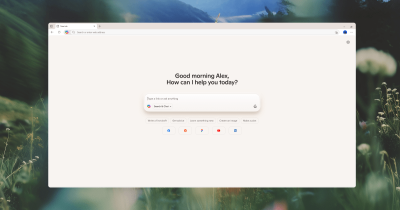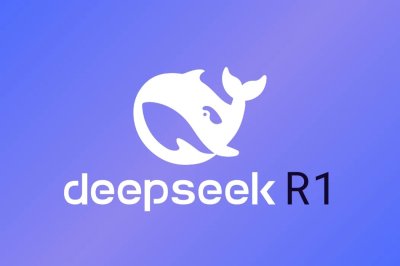Microsoft Edge Gets an AI Overhaul: Copilot Mode Brings Powerful New Capabilities
@devadigax28 Jul 2025

Microsoft is injecting a hefty dose of artificial intelligence into its Edge browser with the rollout of its experimental Copilot Mode. This new feature, currently in testing, aims to fundamentally change how users interact with their browsing experience, leveraging the power of AI to streamline tasks and enhance productivity. The integration of Copilot, Microsoft's AI assistant, directly into the browser represents a significant step forward in the ongoing race to integrate AI into everyday computing.
The core functionality of Copilot Mode centers around its ability to intelligently search and synthesize information across all your currently open tabs. Imagine needing to compare flight prices from several different travel websites – with Copilot Mode, you could query the AI directly, asking for the cheapest flight to a specific destination, and the AI would sift through all your open tabs to deliver a concise answer. This eliminates the need for tedious manual comparison and saves users valuable time.
This capability extends far beyond simple price comparisons. Copilot Mode is designed to handle a broad range of tasks, including booking restaurants, planning trips, and conducting complex research. By providing a centralized, AI-powered interface, Microsoft aims to make these previously multi-step processes significantly easier and more intuitive. For example, you could ask Copilot to find a highly-rated Italian restaurant near you that's open late, and the system would search your open tabs for relevant information, even pulling data from review sites if necessary.
The integration of Copilot into the new tab page further reinforces its central role in the Edge browser. Instead of a blank page or a curated selection of news articles, users will now be greeted by the familiar Copilot interface, ready to answer questions and assist with tasks. This constant accessibility ensures that users can leverage the AI's capabilities throughout their browsing session without having to switch applications or windows.
Microsoft’s move to deeply embed Copilot within Edge represents a strategic shift in how the company envisions the future of browsing. While other browsers offer AI-powered features, Microsoft's approach appears to be more integrated and proactive, aiming to anticipate user needs rather than simply reacting to explicit requests. This proactive approach is a key differentiator and positions Edge as a potential leader in the emerging field of AI-powered browsers.
The experimental nature of Copilot Mode suggests that Microsoft is still iterating on the design and functionality. Feedback from testers will likely play a significant role in shaping the final product. This approach is sensible, given the complexity of integrating AI into a browser and the potential for unexpected challenges and unforeseen use cases. As Microsoft gathers data from real-world usage, the capabilities of Copilot Mode are likely to expand and improve significantly.
This integration is not without its challenges. Privacy concerns, a constant worry in the age of AI, are paramount. Microsoft will need to address these concerns transparently and ensure user data is handled responsibly. The potential for biases in the AI's responses is another area requiring careful attention. Microsoft's commitment to mitigating these risks will be crucial to the long-term success of Copilot Mode.
The broader implications of AI-powered browsers extend beyond improved user experience. The increasing integration of AI into everyday tools could lead to significant changes in how we interact with information and complete tasks online. Microsoft's move with Edge is a significant step in this evolution, and its success could influence the direction of other major browser developers. The competition to integrate AI seamlessly into browsing could lead to rapid innovation and substantial improvements in the overall user experience for everyone. This push into AI integration sets a high bar for competitors like Chrome and Firefox, prompting them to accelerate their own AI development efforts.
Ultimately, Microsoft's experimental Copilot Mode in Edge represents more than just a new feature; it signifies a paradigm shift in how we interact with the internet. The future of browsing might well be AI-driven, and Microsoft is clearly positioning itself at the forefront of this revolution. The success of this new feature will undoubtedly depend on user feedback and its ability to deliver on the promise of streamlined efficiency and enhanced productivity. The coming months will be crucial in determining the lasting impact of Copilot Mode on the world of web browsing.
The core functionality of Copilot Mode centers around its ability to intelligently search and synthesize information across all your currently open tabs. Imagine needing to compare flight prices from several different travel websites – with Copilot Mode, you could query the AI directly, asking for the cheapest flight to a specific destination, and the AI would sift through all your open tabs to deliver a concise answer. This eliminates the need for tedious manual comparison and saves users valuable time.
This capability extends far beyond simple price comparisons. Copilot Mode is designed to handle a broad range of tasks, including booking restaurants, planning trips, and conducting complex research. By providing a centralized, AI-powered interface, Microsoft aims to make these previously multi-step processes significantly easier and more intuitive. For example, you could ask Copilot to find a highly-rated Italian restaurant near you that's open late, and the system would search your open tabs for relevant information, even pulling data from review sites if necessary.
The integration of Copilot into the new tab page further reinforces its central role in the Edge browser. Instead of a blank page or a curated selection of news articles, users will now be greeted by the familiar Copilot interface, ready to answer questions and assist with tasks. This constant accessibility ensures that users can leverage the AI's capabilities throughout their browsing session without having to switch applications or windows.
Microsoft’s move to deeply embed Copilot within Edge represents a strategic shift in how the company envisions the future of browsing. While other browsers offer AI-powered features, Microsoft's approach appears to be more integrated and proactive, aiming to anticipate user needs rather than simply reacting to explicit requests. This proactive approach is a key differentiator and positions Edge as a potential leader in the emerging field of AI-powered browsers.
The experimental nature of Copilot Mode suggests that Microsoft is still iterating on the design and functionality. Feedback from testers will likely play a significant role in shaping the final product. This approach is sensible, given the complexity of integrating AI into a browser and the potential for unexpected challenges and unforeseen use cases. As Microsoft gathers data from real-world usage, the capabilities of Copilot Mode are likely to expand and improve significantly.
This integration is not without its challenges. Privacy concerns, a constant worry in the age of AI, are paramount. Microsoft will need to address these concerns transparently and ensure user data is handled responsibly. The potential for biases in the AI's responses is another area requiring careful attention. Microsoft's commitment to mitigating these risks will be crucial to the long-term success of Copilot Mode.
The broader implications of AI-powered browsers extend beyond improved user experience. The increasing integration of AI into everyday tools could lead to significant changes in how we interact with information and complete tasks online. Microsoft's move with Edge is a significant step in this evolution, and its success could influence the direction of other major browser developers. The competition to integrate AI seamlessly into browsing could lead to rapid innovation and substantial improvements in the overall user experience for everyone. This push into AI integration sets a high bar for competitors like Chrome and Firefox, prompting them to accelerate their own AI development efforts.
Ultimately, Microsoft's experimental Copilot Mode in Edge represents more than just a new feature; it signifies a paradigm shift in how we interact with the internet. The future of browsing might well be AI-driven, and Microsoft is clearly positioning itself at the forefront of this revolution. The success of this new feature will undoubtedly depend on user feedback and its ability to deliver on the promise of streamlined efficiency and enhanced productivity. The coming months will be crucial in determining the lasting impact of Copilot Mode on the world of web browsing.
Comments
Related News

Beyond the Mic: Instagram Denies Eavesdropping, But AI's Predictive Power Redefines Digital Privacy
@devadigax | 01 Oct 2025
@devadigax | 01 Oct 2025

Microsoft 365 Premium Redefines AI Productivity, Bundling Copilot to Rival ChatGPT Plus Pricing
@devadigax | 01 Oct 2025
@devadigax | 01 Oct 2025

Wikimedia's Grand Vision: Unlocking Its Vast Data Universe for Smarter Discovery by Humans and AI
@devadigax | 30 Sep 2025
@devadigax | 30 Sep 2025

Google Drive Fortifies Defenses with New AI-Powered Ransomware Detection
@devadigax | 29 Sep 2025
@devadigax | 29 Sep 2025

The DeepSeek Phenomenon: Unpacking the Viral AI Chatbot from a Leading Chinese Lab
@devadigax | 29 Sep 2025
@devadigax | 29 Sep 2025
 AI Tool Buzz
AI Tool Buzz